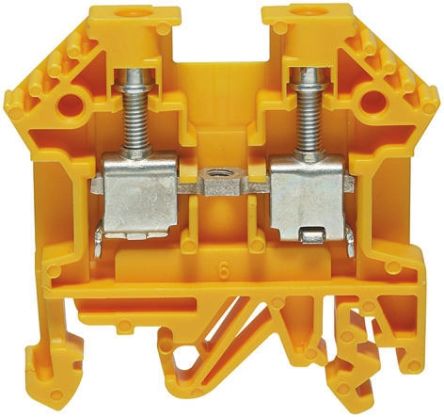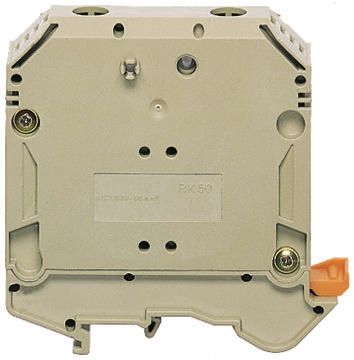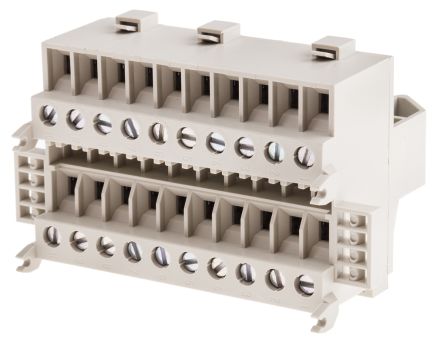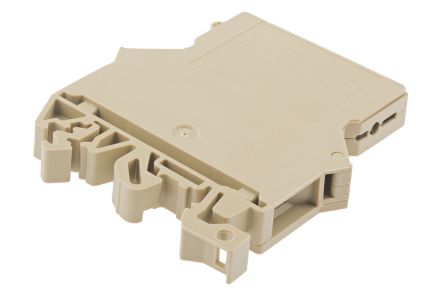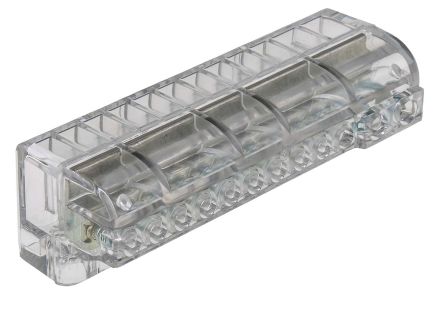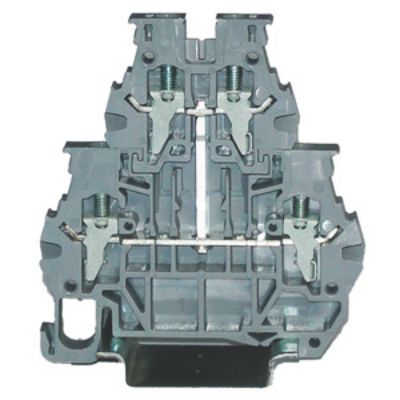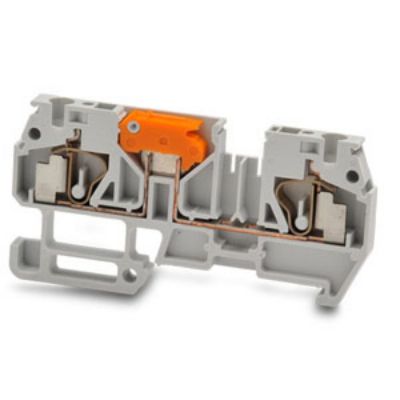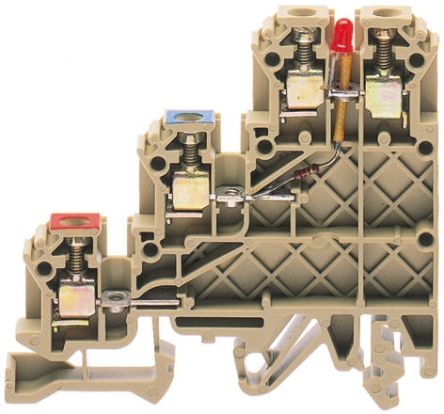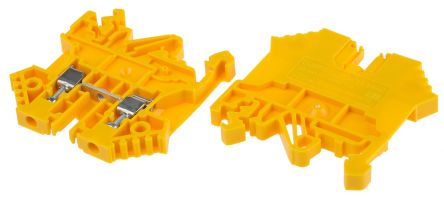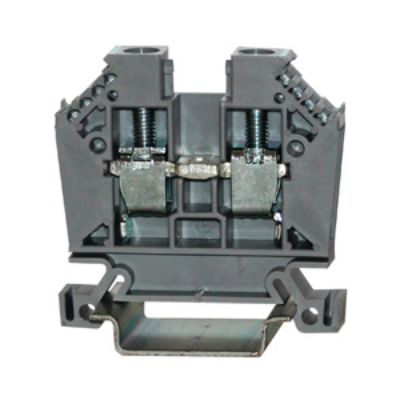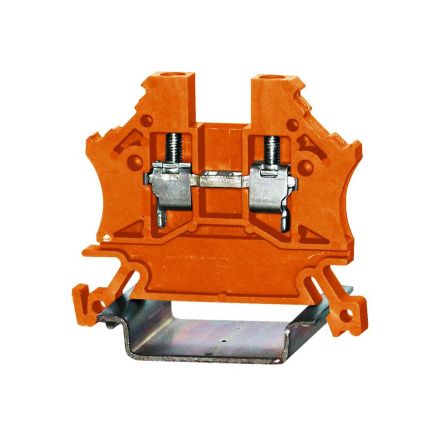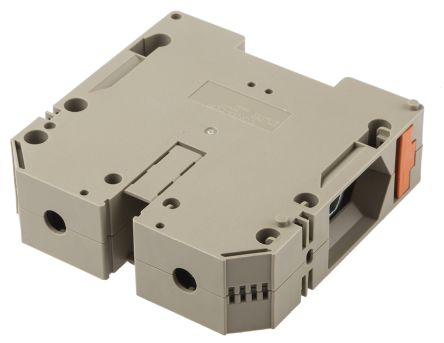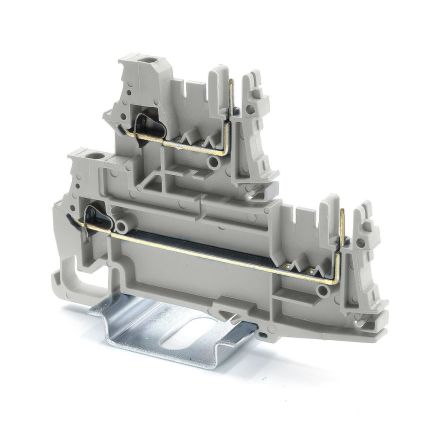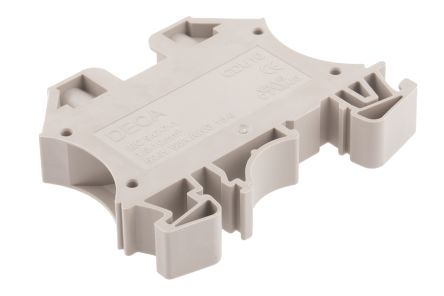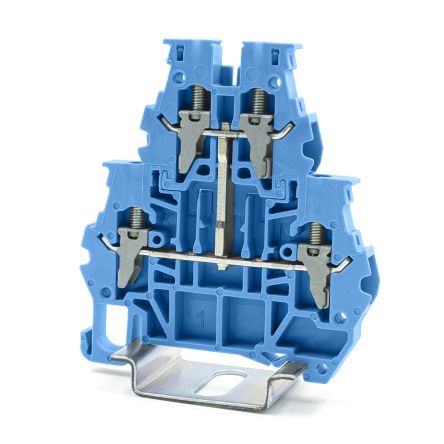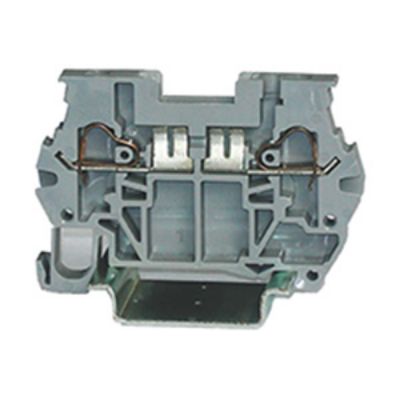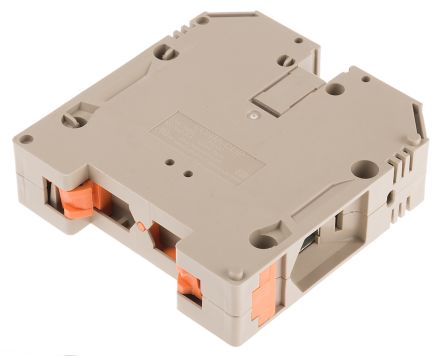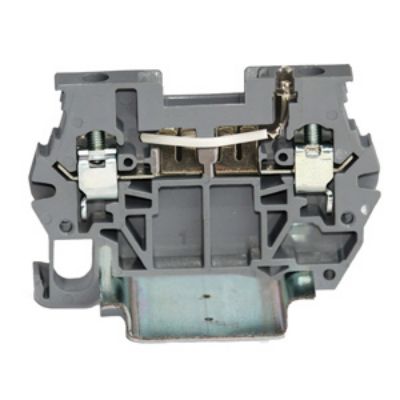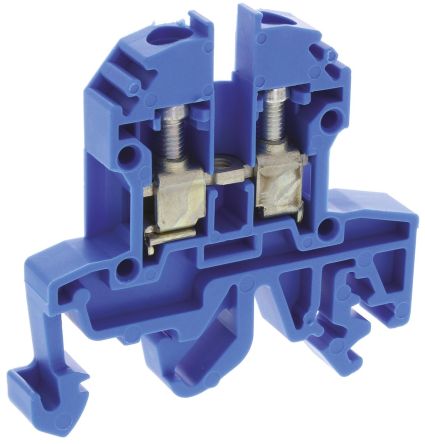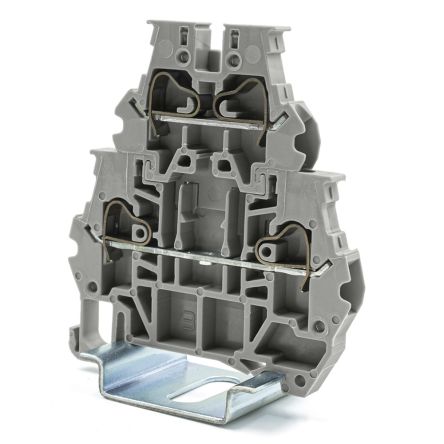- Automation & Control Gear
- Cables & Wires
- Enclosures & Server Racks
- Fuses & Circuit Breakers
- HVAC, Fans & Thermal Management
- Lighting
- Relays & Signal Conditioning
- Switches
- Batteries & Chargers
- Connectors
- Displays & Optoelectronics
- ESD Control, Cleanroom & PCB Prototyping
- Passive Components
- Power Supplies & Transformers
- Raspberry Pi, Arduino, ROCK, STEM Education & Development Tools
- Semiconductors
DIN Rail Terminal Blocks
DIN Rail terminal blocks are used to protect electrical systems against overcurrent and short-circuiting. They clip on to a DIN rail, which is a standard-size metal rail on to which terminals are mounted in a control cabinet. You can find out more in our complete guide to DIN rail terminal blocks.
How do DIN rail terminal blocks work?
DIN rail terminals are made from plastic, as this insulates the electrical current running through the terminal. Fused DIN rail terminals often have a hinged section containing the fuse, which can be opened up to stop the flow of electricity. Some are fitted with an LED blown fuse indicator to let you know when the fuse needs changing. Fused DIN rail terminals come with different fuse size inserts and may be colour coded to indicate the current rating. Non-fused work the same, just without the fuse protection.
What are fused DIN rail terminals used for?
Fused DIN rail terminals are widely used in industry and offer more protection from overcurrent than non-fused DIN rail terminals. They are usually used to protect sensors and relays.
However, both fused and non-fused can be used for applications such as:
- Energy managementPower suppliesLighting controllersTelecommunicationsBuilding management systemsIndustrial and civil electrical installationsHeating and air conditioning controls
